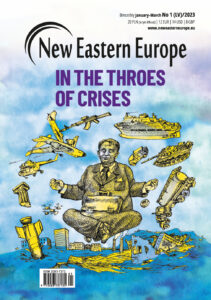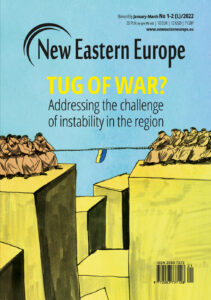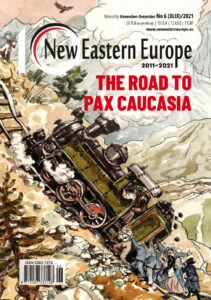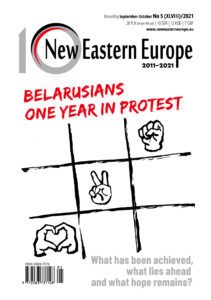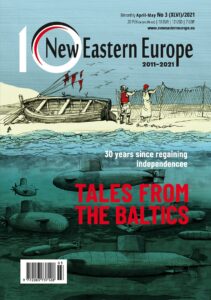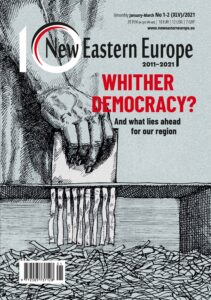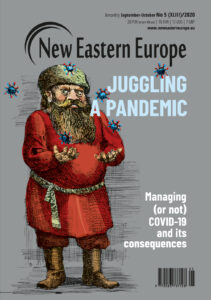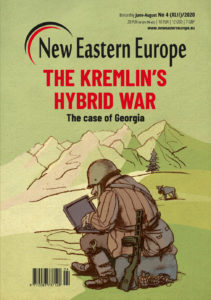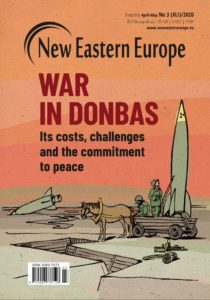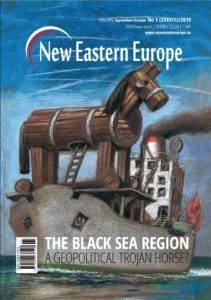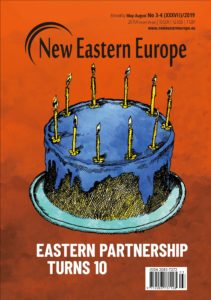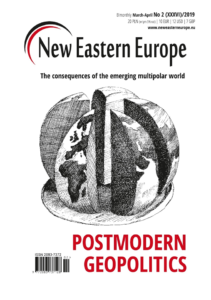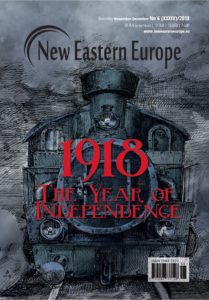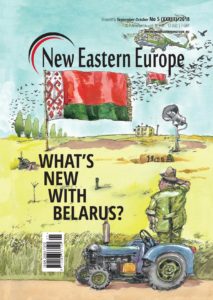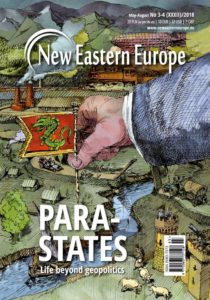The forgotten border
Following the First World War, the new border established between Poland and Germany, finally implemented in 1921, stretched from the Upper Silesian Coal Basin all the way to the Baltic Sea. The border, however, remained a primary source of conflict; especially as the political decisions of the Weimar Republic allowed for a revision of the Versailles Treaty. Today it is the focus of a joint Polish-German project.
Only during concerts would he receive applause like this. Ignacy Jan Paderewski, a pianist and composer, arrived in Poznań on December 26th 1918 (18 days after the end of the First World War) and was greeted with much excitement by the Poles. Earlier, he had played a concert at the White House in Washington, DC and met with the US President Woodrow Wilson, whom he tried to convince that an independent Polish state had to be created. It was still yet unclear as to where exactly the borders of this state would lie.
February 26, 2018 -
Uwe Rada
-
History and MemoryIssue 2 2018Magazine

Zbąszyń train station. Commons.wikimedia.org
It looked as if everybody was waiting for a signal and Paderewski gave them one: one day after his arrival, there were demonstrations in the city and the first shots were fired. On December 28th 1918 Poznań, where Poles were a majority, became part of Poland. An uprising which took place became known as the Greater Poland Uprising since Poles were also a majority in the city’s surroundings. They demanded that the former Polish territory of Greater Poland leave the Prussian province and re-join the new Polish state. The US president’s postulate of self-determination of nations gave them an important argument in formulating future demands.
The uprising ended successfully. At the moment when Paderewski, together with Roman Dmowski, a politician of the national-democratic camp, were heading to Versailles for peace negotiations, Greater Poland was already in Poland’s ownership. The Treaty of Versailles granted Poland both Greater Poland and Western Prussia. Other areas, such as Lower Silesia and parts of Western and Eastern Prussia, which were subject of dispute between Germany and Poland, were envisioned to hold referenda.
Unresolved borders
The signing of the Versailles Treaty on June 28th 1919 was Paderewski’s next success. After 123 years of partitions, Poland returned to Europe’s maps. However, even after the treaty came into force on January 10th 1920 there were still many border-related issues that remained unresolved. In Masuria and Kwidzyń (Marienwerder), for example, it was not until June 1920 that the majority expressed their will to remain on the German side. In Lower Silesia the referendum took place on March 20th 1921 and 59.6 per cent of the region’s voters wanted to stay within the German borders while 40.4 percent wanted to become part of Poland. The referendum was followed by a third Silesian Uprising. It ended on July 5th with an armistice that was forced by the Allies. On October 20th 1921 the Conference of Ambassadors in Paris made a decision that, despite the vote, two-thirds of Lower Silesia would go to Poland while a third would remain within the German borders. Katowice and a larger part of the Coal Basin thus became part of Poland.
The border between Poland and Germany was finally established in 1921. It stretched from Racibórz (located on the Oder River) through the Upper Silesian Coal Basin all the way to the Baltic Sea and the Free City of Danzig and the Polish port of Gdynia. In addition, there was a border between Poland and Eastern Prussia. Measuring 1,912 kilometres, it was four times longer than today’s Polish-German border that was established in 1945.
Since the beginning it was not a normal border. In Germany, where it was regarded as a “bloody border”, nationalist and revanchist forces were mockingly calling Poland a “seasonal state”. The revision of the border was on the agenda of all political parties in the Weimar Republic. Given this, it is quite surprising that 100 years later this border is almost completely forgotten. It is marked only on a few maps. At the same time, however, phrases such as “the Polish corridor” and the battle over Lower Silesia are still quite popular in Germany.
In Poland it is sometimes said that the border can still be identified because those parts that belonged to Poland before the Second World War continue to have the same social structures, while the areas of the former German territory – the so-called “Polish Wild West” – need to mature. Also, the line of the old border, which is now fully within the Polish territory, can be quite visible in many places, like between Zbąszyń (formerly Bentschen) and Zbąszynek (formerly Neu Bentschen).
With the establishment of the new border the railroad hub in Bentschen became the railway station of Zbąszyń, which was inside the Polish territory. It was thus necessary to build another hub on the German side – in Neu Bentschen. Thereby, the two railroad stations, which are located on the Berlin-Frankfurt-Poznań route, became a signature of both states. The railway station in Neu Bentschen was built based on the design of Wilhelm Beringer, an architect who also designed the railway station building in Frankfurt (am Oder). On the Polish side, the railway station in Zbąszyń became a “gateway to the Second Republic”.
Rediscovery
The new border also had an impact on other cities. In Frankfurt (Oder), which lost out economically as a result of the new boundary, a new housing estate was built (even before the new railway station was constructed) for the workers of the Eastern Directorate of the Reich Railways (Reichsbahndirektion Osten) who moved there from Berlin. The estate was designed by Hanns Martin Kießling, and the streets resembling the areas assigned to Poland were called the Posener Ring (Poznań Roundabout) and the Bromberger Ring (Bydgoszcz Roundabout).
Also, other buildings designed by Kießling in Frankfurt had bay windows decorated with emblems of German cities which at that time belonged to Poland, and those of southern Tyrol, which belonged to Italy. At the same time, in Poznań it was debated whether the German Royal Castle located in the city should undergo Polonisation.
Today, there are still traces of the non-material legacy of the border. Just like in Kaliningrad, in Wrocław the university became the place where German Eastern studies found their headquarters. In Poznań the third largest Polish university, after Kraków and Warsaw, was established in 1919. It was here that Polish Western studies programmes had their foundation.
All these created an opportunity for German and Polish academics, students, art historians and museum workers to initiate a project called “1918: A forgotten border”. This co-operation is aimed at examining the impact that the border had on the everyday life of Germans and Poles, as well as the one that it is playing in the collective memory of both societies today.
Overall, the project is composed of three parts. In the first part – titled “A rediscovery of the forgotten border” – students in the inter-disciplinary Polish studies programme at the Viadrina European University in Frankfurt (Oder) will travel from Lower Silesia to Gdańsk (former Danzig) in search of traces of the border. This field trip, which complements a seminar led by Professor Dagmara Jajeśniak-Quast, will allow students the chance to visit the most important landmarks of the former border and engage with experts. The results of their fieldwork will be included in a guide envisioned for publication this autumn.
The second part of the project titled “Forgotten modernism and national buildings” will include an exhibition of interwar architecture in Frankfurt (Oder) and Poznań. The exhibit will be on display in autumn in Poznań, Frankfurt (Oder), Słubice as well as the castle in Trzebnica. Visitors will see the most important buildings of “national modernism” in both cities as well as learn about their architects.
The third part of the project titled “From enemy observation to trans-border co-operation” will focus on the history of German Eastern studies and Polish Western studies. In addition, the mayor of Poznań, the Marshal of the Greater Poland voivodship and the prime minister of Brandenburg, who is also the head of the office of representation to Poland, all expressed their interest in supporting this part of the project.
Enemy observation
“Enemy observation” and “co-operation” are the two main slogans that have been accompanying the 100 year history of Polish-German relations since the establishment of the border. The hostile attitude towards Poland that characterised Frankfurt (Oder) in the interwar period can be seen in the words of the then mayor of the city, Gustav Kinne, who on the anniversary of the Eastern Marchia in 1927 said: “As the biggest city in Eastern Marchia we need to fulfil our sacred duty, which is to build a protective wall against the pressing Slavdom. Our leading thought must be: will, path, aim. Eastern Marchia is German, and will remain German, German are to become all things that were German before.”
For this purpose, numerous institutions with the name Ostmark (Eastern Marchia) were created. Some of these included the earlier mentioned housing estate designed by Hanns Martin Kießling and the 1924 Artesian and Agricultural Fair of Eastern Marchia (Ostmarkschau für Gewerbe und Landwirtschaft, OGELA), which took place in Frankfurt.
In Poznań the atmosphere was less anti-German than it was anti-Polish in Frankfurt. The city was too focused on itself at the time and had two very different groups. One included the Polish residents who lived in the city before the war and knew Germany very well. The other group came from the Russian and Austrian partitioned territories and saw Poznań, with its Royal Castle and bourgeois buildings, as a German city. Given that, it was important for both sides to express their national identity, especially through architecture. In Poznań, the neo-Roman and neo-Gothic styles were perceived, especially because of the Royal Castle, as German as opposed to the neo-Baroque and neo-classicism. The latter were regarded as “Polish style” – the example of which are the buildings designed by Polish architect Adam Ballenstedt. Among other things, he designed Dom Tramwajarza, a palace used for representative purposes. To enforce the Polish identity on the formerly German Poznań, the Polish General Exhibition (Powszechna Wystawa Krajowa) was held in the city in 1929. Meanwhile in Frankfurt, the Eastern Marchia housing estate designed by Kießling (and today called Paulinenhofsiedlung) exemplified the style of the so-called defence of the fatherland architecture.
Yet, can we really say that in one case it was a German style and in the other Polish? Was modernist architecture nationalised on both sides of the border? “On the level of rhetoric, yes,” says Szymon Piotr Kubiak, who works for the National Museum in Szczecin and is the author of a book on Poznań architecture between 1919 and 1939. In addition to the rhetorical level, Kubiak mentions the pragmatic level. “We can assume that Ballenstedt knew Kießling,” he says during a workshop organised before the planned architecture exhibition. “They both studied at the Berlin Technical University and this is what shaped their style in architecture.” With these words Kubiak suggests that there is nothing Polish in Ballenstedt’s architecture. He could have just as well designed buildings in Germany.
Source of conflict
It can thus be said that the architects did not share the hostile rhetoric and for the whole time spoke the same language. In other words, there was enemy observation but there was also co-operation. This co-operation, however, was an exception during the interwar period. The border, and especially the corridor, remained a primary source of conflict; especially as the political decisions of the Weimar Republic allowed for the revision of the Versailles Treaty. Its constant questioning by Germany at that time can be interpreted as an overture of the country’s later attack on Poland. Also, after the conclusion of the 1934 Polish-German pact of non-aggression, there were no examples of successful trans-border co-operation, nor anything like the everyday interactions that we can observe between Frankfurt and Słubice today.
After Germany’s attack on Poland in 1939, the killing of six million Polish citizens (among them three million Jews) and the shifting of the border to the West as a result of the 1945 Potsdam Treaty, the older border disappeared into oblivion. However, it still constitutes an important element in the history of Polish-German relations.
Uwe Rada is a German author and essayist. He is one of the initiators of the project “1918: A forgotten border”. He is also the author of a book Odra. Życiorys pewnej rzeki (The Oder. A life story of a river) published by the Jan Nowak-Jeziorański College of Eastern Europe in Wrocław.
The project “1918: A forgotten border” involves both Poles and Germans and institutions from both countries. Project participants include, among others, the Viadrina European University, the Adam Mickiewicz University in Poznań, the Poznań Polytechnic University, and the Polish-German Research Institute at Collegium Polonicum in Słubice. The first meeting of the project took place at the culture centre “Zamek” located in the former German Royal Castle. This place also houses the Music Academy that was named after Ignacy Jan Paderewski who arrived in Poznań 100 years ago.








